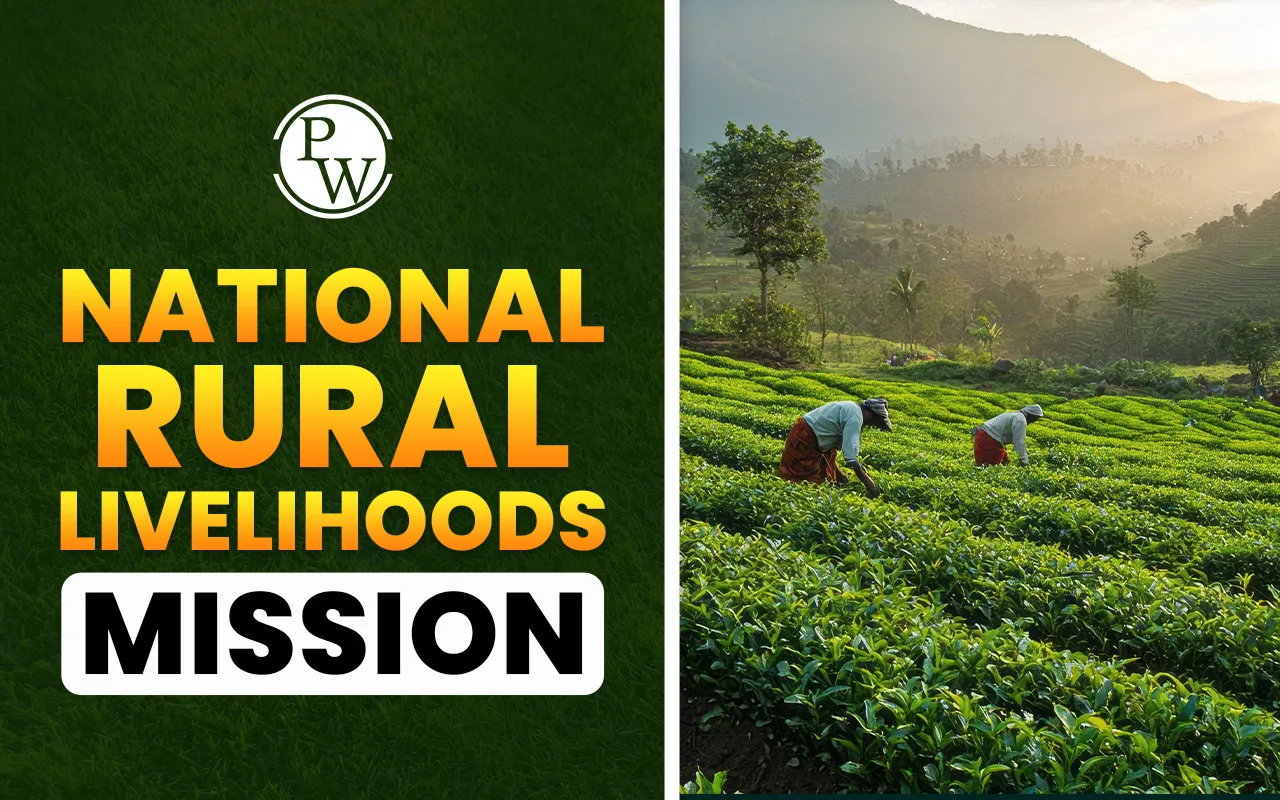
National Rural Livelihoods Mission (NRLM), now known as Deendayal Antyodaya Yojana, is a government scheme under the Ministry of Rural Development (MoRD). This scheme aims to reduce rural poverty by promoting self-employment and skilled wage employment opportunities. DAY-NRLM empowers rural poor, especially women, by forming Self-Help Groups (SHGs), strengthening financial inclusion, and improving access to sustainable livelihoods.
National Rural Livelihood Mission has been renamed as Deendayal Antyodaya Yojana. The Deendayal Antyodaya Yojana National Rural Livelihoods Mission (DAY-NRLM) is a flagship poverty alleviation program that was launched in 2011. With a focus on women-led SHGs, this mission encourages savings, internal lending, credit access, and livelihood diversification.
Here is an overview of this government scheme for UPSC exam:
| Deendayal Antyodaya Yojana Overview | |
| Full Name | Deendayal Antyodaya Yojana National Rural Livelihoods Mission |
| Objective | To reduce rural poverty by enabling poor households to access gainful self-employment and skilled wage employment |
| Implementing Body | Ministry of Rural Development (MoRD) |
| Target Coverage | Around 7 crore (70 million) rural poor households across approximately 600 districts, 6000 blocks, and 2.5 lakh Gram Panchayats in India |
| Key Components |
|
| Community Institutions | SHGs, Village Organizations (VO), and Cluster Level Federations (CLFs) |
| Funding | Centrally sponsored scheme |
| Supporting Schemes | Works in conjunction with Mahatma Gandhi National Rural Employment Guarantee Scheme (MGNREGS) |
| Implementation Units | State Rural Livelihood Missions (SRLM), District Mission Management Units (DMMUs), Block Mission Management Units (BMMUs) |
| Active In | 7,144 blocks across 745 districts |
The key objective of National Rural Livelihood Mission is to uplift the socio-economic conditions of the rural poor. Here are some other objectives of this scheme:
Mobilise rural poor households into self-managed SHGs and unite them at various levels.
Promote sustainable livelihoods through skill development, micro-enterprise support, and access to employment.
Make it easier for SHGs and their members to get bank loans, insurance, and pensions.
Train and support poor families so they can earn better and live better lives.
Encourage new ideas and work with others to improve village life.
Join hands with other government schemes like MGNREGA, PMAY-G, and PMGSY to give more support and benefits to the poor.
With the above objectives, DAY-NRLM adopts a demand-driven and community-led approach, which ensures rural participation in development.
National Rural Livelihood Mission primarily focuses on those who are traditionally excluded from mainstream development. Here are the main beneficiaries of this scheme:
Rural women from Below Poverty Line (BPL) families.
Scheduled Castes (SC), Scheduled Tribes (ST), and Other Backward Classes (OBC).
People with disabilities and elderly members.
Minority groups and other vulnerable sections.
Small and marginal farmers, landless labourers, and migrant workers.
Youth from rural areas seeking employment or entrepreneurship opportunities.
In DAY-NRLM, special emphasis is given to women empowerment, with at least one woman from each rural household being part of an SHG.
The benefits of National Rural Livelihood Mission are as follows:
Empowerment of Women and Poor Households: Promotes social inclusion by organizing one woman from each rural poor household into Self Help Groups (SHGs).
Financial Inclusion and Credit Access: Facilitates bank linkages, provides interest subvention, and supports SHGs with revolving and investment funds to improve credit access.
Livelihood and Skill Development: Enhances income generation through training, skill-building, self-employment support, and market linkages, especially for rural youth via RSETIs.
Institution Building and Capacity Strengthening: Focuses on creating strong SHG federations and training members in financial management, governance, and livelihood strategies.
Decentralized and Integrated Planning: Allows states to customize poverty reduction plans and ensures convergence with various ministries for holistic rural development.
The mission also encourages digital empowerment through initiatives like e-SHGs.
Since its inception, the National Rural Livelihoods Mission's achievements reflect its wide reach and impact. Here are some of the key Achievements of DAY-NRLM:
The mission is active in 7,144 blocks across 745 districts in 28 states and 6 union territories.
10.05 crore rural women households have been mobilized into over 90.90 lakh Self Help Groups (SHGs).
A total capitalisation support of around ₹51,368 crore has been provided to SHGs and their federations.
Since 2013-14, these SHGs have accessed cumulative bank credit amounting to approximately ₹10.20 lakh crore.
Under this mission Start-up Village Entrepreneurship Programme (SVEP) has supported 3.74 lakh enterprises by mid-2025.
In essence, DAY-NRLM ensures participation, ownership, and transparency. For UPSC aspirants, DAY-NRLM serves as a case study on inclusive development and participatory governance.
Think no more, explore Physics Wallah’s UPSC courses to master Government Schemes for upcoming exam!
